Named to the UNESCO world heritage site list in 2000, the Wachau wine region in Austria is deservedly one of the spectacular winemaking regions of the world. It has idyllic scenery with steeply terraced vineyards and quaint historical villages complete with castles and adorned churches. There is a lot to ponder in Wachau even if it’s just 12 miles long.
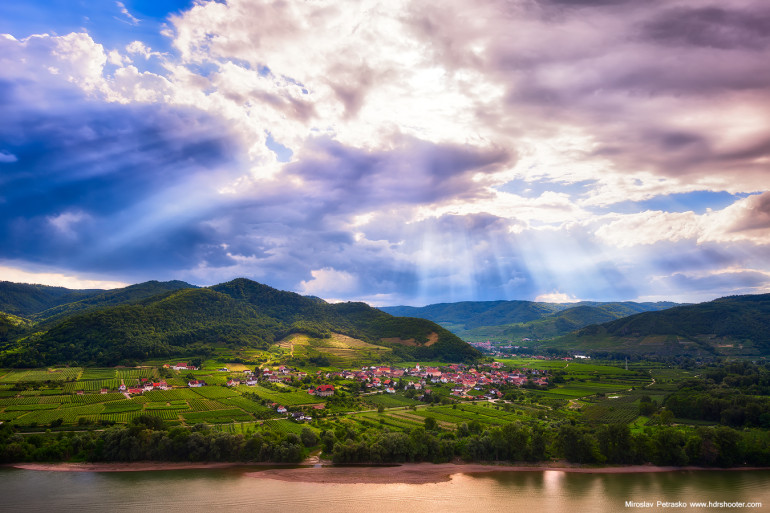
A Guide to the Wachau Valley Wine Region
The Danube is the longest river in the European Union and the second longest in all of Europe (The first is Volga). It flows from Germany through 9 different countries before emptying in the Black Sea.
A lil’ History
Many of the region’s wineries date back at least 8 generations. There are a few special exceptions including Hirtzberger since the early 1800’s, Gritsch since 1799, Weingut Maccherndl which goes back to 1786 and Nikolaihof is the oldest winery in Austria with records back to 777.
The Wines of the Wachau
The Wachau Valley region is small with 124 vineyards and 650 growers cultivating 3340 acres (1350 ha) planted mainly to Riesling and Grüner Veltliner. Grüner thrives on the Loess (wind blown) sandy soils in the lower slopes and producers reserving Riesling for the highest and steepest sites on infertile gneiss (looks like marble/granite) and granite soils.
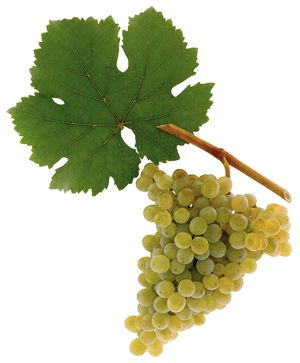
Grüner Veltliner
In general, this grape makes a lean, mineral-driven dry white wine. Flavors range from the spicy (arugula, pepper, smoky) and herbal (coriander seed) to floral (white flowers) and fruity (green apple and pear to apricots and tropical fruits), yet they all retain a plush, rounded texture well supported by lively acidity levels. Grüner Veltliner wines have a richer mouthfeel than Riesling wines, making the tastings of them side-by-side much more compelling.
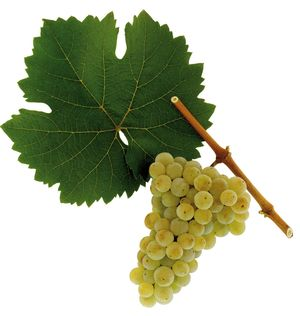
Riesling
In contrast, Rieslings retain a more taut and racy backbone of acidity. Less weighty than Grüner Veltliner, Riesling showcases a range of complex aromas starting with a honeysuckle/apple blossom floral component, moving to ripe peach and lime zest. You’ll note a long salty mineral-driven finish.
Other Wines
Besides Riesling and Grüner Veltliner, a few producers grow other grape varieties. For example, Gritsch in Spitz has some Sauvignon Blanc as well as a rare indigenous grape called Neuburger. Others, like Holzapfel in Joching and Maccherndl in Wosendorf make a small percentage of the red wine Zweigelt. Besides these you can also find very limited quantities of Chardonnay, Weissburgunder (Pinot Blanc), Malvasia, and Muskateller.

Wachau’s Special Wine Designation
Founded in 1983, the Vinea Wachau Nobilis Districtus is a regional vintner’s association with over 250 members. Although not officially part of Austrian Wine Law, its role is similar to the VDP in Germany in that it is a quality-based organization with strict controls. There are 3 different styles (all must be dry without any perceivable wood flavors) that adhere to Codex with the goal of hand-crafted, high quality wines showcasing the typicity of the Wachau’s different vineyard sites.
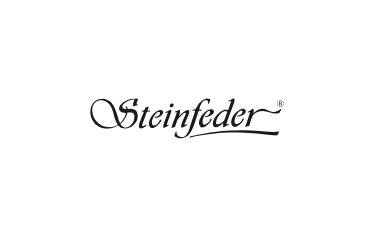
Steinfeder (a type of feather grass indigenous to the region) is the lightest style with max alcohol levels at 11.5%. The style is lively and refreshing and delicate. (Think Trocken Kabinett from Germany).
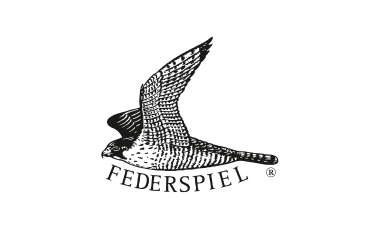
Federspiel (a type of bird used as prey in falconry) must have an alcohol level between 11.5%-12.5% essentially making the wines a bit richer on the palate. These are very precise styles that pair well with food.

Smaragd (pronounced Sma-rocked and refers to the emerald green lizards found on terraces) is the highest quality category and the most powerful. Alcohols here must meet a minimum of 12.5% and are the most ageworthy. (Think Grosses Gewachs from the VDP).
Winemaking differences in the Wachau
While the terroir and grapes of the Wachau define the essence of this wine, you’ll notice that there are stylistic differences based on winemaking as well:
- Oak: By law, no wines can show “noticeable” oak flavors, so most winemakers use neutral oak (if any at all). There are a few proponents of oak-aging who argue that it adds to the wine’s structure and richness. Wines with oak tend to be a bit creamier.
- Skin contact: Skin contact is another technique that you will find varies depending on producer. Proponents of long skin contact (up to 10 days) note that it seems to coax out attributes unique to the terrior of an individual site. Wines with longer skin contact tend to be a bit weightier and tannic.
- Lees: Lees aging also impacts the style of wine in the Wachau. Long lees contact is known to soften hard/bitter phenolics resulting in a creamier, rounder texture. Some will age from 12 months to as long as 13 years (in one unique instance)!
- Noble Rot One final winemaking technique used is the addition of a small percentage of botrytisized berries (e.g. noble rot) which adds both a richer texture and additional aroma compounds which give the wine more complexity in the aromatics.

The Wachau Valley Wine Region
The Wachau wine region is located 90 miles from the Slovakian border and an easy 1 hour drive from Vienna. The climate is central European (continental), which is marked by short cold winters and a long dry growing season. Harvest time is often late in the season (into November), due to the moderating effect of the Danube river (which slows freezing weather). The region receives just 19.7 inches/500mm year of rainfall which means producers drip irrigate during the dry months.
How Austria’s continental climate affects wine
With controlled watering and dry sunny weather, grapes do achieve full ripeness as well as respectable alcohol levels (12-14%). However, because the season is longer the grapes still maintain their heightened acidity (a win-win!). Noble rot is rare and thus, the region is traditionally known for producing dry white wines.
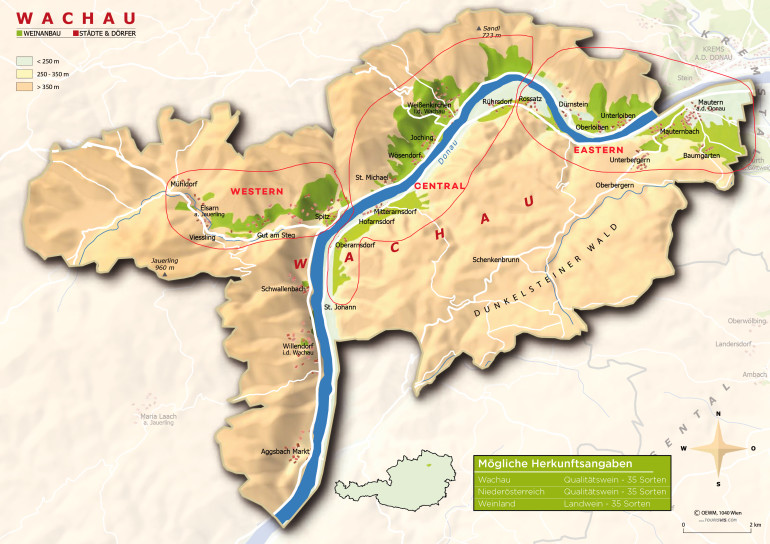
Western Wachau: In the western village of Spitz and the Spitzer graben, cooling breezes from the northern Waldviertal forest aid in keeping overall temperatures down. The results are leaner wines with fresh and vibrant acidity levels. Soils here range from calcareous sandy marls (Burgberg vineyard) that yield lighter wines to the darker colored paragneiss lined with iron (Atzberg vineyard) and more structured wines.
Central Wachau: In the central district of the Wachau near Wiessenkirchen the climate becomes more influenced by the warming Pannonian Basin breezes resulting in slightly richer styles. Fertile Loess and amphibolite soils result in well structured styles in the famous Achleiten and Hochrain vineyards.
Eastern Wachau: Surrounding Durnstein, even further east, the climate warms even more. Here is where more fleshy and richly textured styles are consistently found on gneiss (granite like) infertile soils, such as the large 61 acre/ 25 ha Loibenberg vineyard.

The Vineyards of the Wachau
Visually and culturally stunning are the 1000 year old man-made stone wall terraces. These are considered “dry”, meaning there is no mortar to hold them together allowing water to drain through. These walls simultaneously protect the terraces from erosion while providing much needed heat (they retain heat during the day and release it at night) during cool evenings. Without these man-made terraces, viticulture would be impossible on the steep slopes (up to 1640 ft / 500 m high).
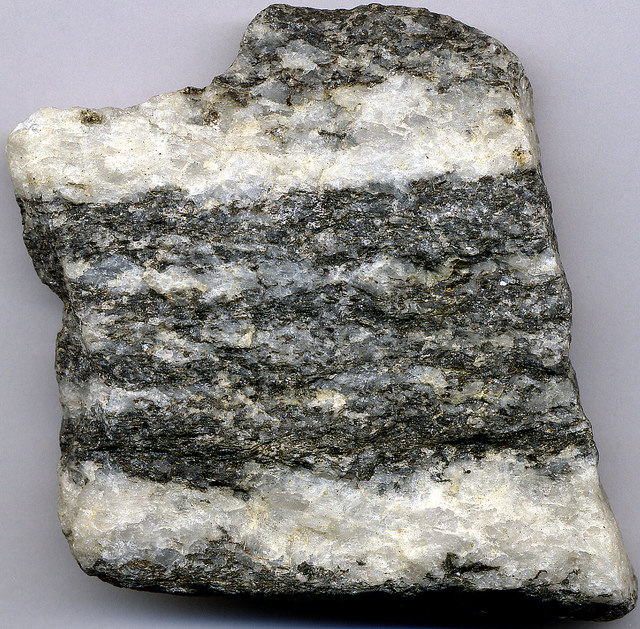
Rock Talk
The Wachau’s geology is fascinating. Tectonic plates collided 350 million years ago creating mountains. Over time, heat and pressure metamorphosed these granite mountains into gneiss, marble and amphibolite–the main bedrocks in the region. The Danube River gorged its way through this gneiss leaving marine deposits (clay and calcareous marl) in former river beds before finding the way to its current location.
Ice Age winds blown eastern sands (e.g. Loess) is what you’ll find in the lower slopes and flatter parts of the region. Finally, areas in the region that are in front of steep hills collected erosion deposits and have much deeper top-soils. This level of soil variation is typical of many fine wine regions, including Burgundy, and result in why the wines taste different depending on which vineyard they’re grown.
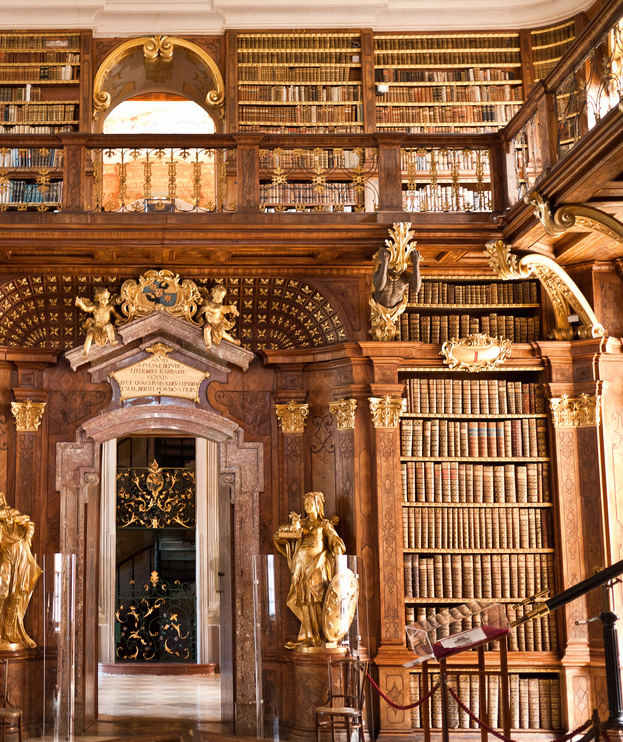
If you’re planning to go
- For dining, the Wachauerstube restaurant in Durnstein is worth a visit. Daily specials vary from hand-made pumpkin soup with roasted pumpkin seeds to local catfish, a regional specialty.
- Gasthof Prankl in Spitz offers cosmopolitan dining with curry-based soups and Asian-themed dishes appearing alongside traditional schnitzel and Austrian potatoes.
- The impressive Melk Abbey looks like something out of Frozen. Founded in 1089, it has a late baroque exterior (from the 1500’s) and Gothic and Neo Gothic interior. To sum it up: it’s omg-epic.
- Weissenkirchen (meaning white church) is one of the oldest fortified church squares in Austria and home to the country’s longest continually-run kindergarden school (since 987). It’s also surrounded by vineyards!
- Durnstein is the most touristy village–it’s so quaint! You can take a 30 minute hike up the mountainside behind the town to end up standing at their former abbey which has epic views.
- Krems, although not technically part of the Wachau, is the biggest city in the area and the best place for shopping.